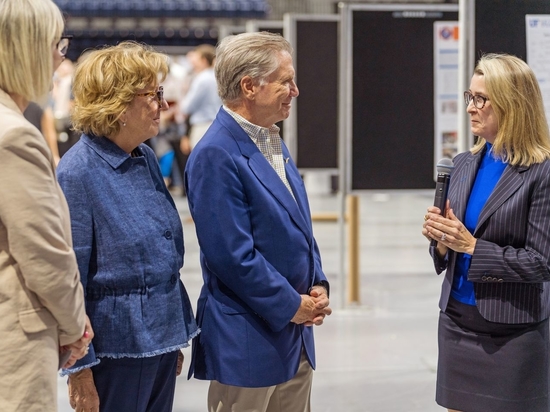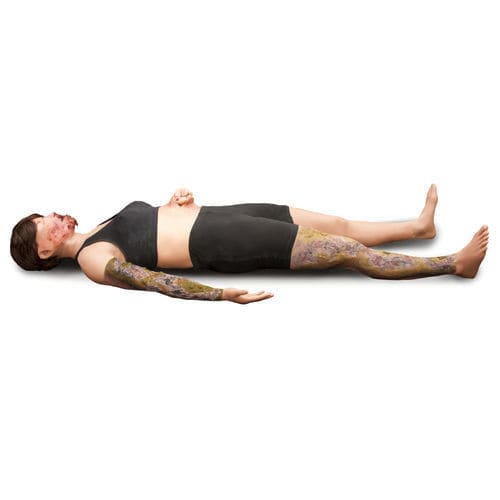
#Industry News
Women In Combat
Introducing the Tactical Casualty Care Female Simulator (TCCFS)
Up until 2013, women were not permitted to serve in ground close combat roles in the US military (and as recently as 2016 in the UK). Even now, an innate uneasiness remains an inherent mindset of many involved in the theater of war. Arguments against women performing combat roles have ranged from a perception of being physically weaker, discomfiture at the concept of wives, mothers, sisters and daughters on the battlefield, through to the risk to male soldiers whose instinct would be to protect females, or the sexual distraction women might cause.
Perhaps unsurprisingly, this disquiet can also extend to the pre-hospital treatment of female patients by remote trauma medics, who may have limited practical experience in such scenarios.
A modern paradigm
History has plentiful evidence of the abilities of females in combat — there are many examples of women leading military campaigns and performing active roles, their gender proving no impairment to their ability to directly influence highly successful outcomes.
From early Britain’s Boudicca, to Cherokee leader Nancy Ward, many historically important female leaders have openly and actively plied their warcraft on the battlefield as women. Still more have made significant contributions whilst participating in the guise of men. In historical terms, therefore, the idea that women have no place on the battlefield is a relatively recent paradigm of modern warfare.
Lack of preparedness
The reality is that for combat medics— of whom approximately 80% in the US military are male—embedded, well-honed trauma medical skills that are automatic when faced with a male patient, can desert the medic when the patient is female. Even the simple task of cutting clothing to access wounds, apply AED pads or perform a secondary survey can be inhibitive.
“When you have a female soldier that is hurt sick, or something like that and you’re too afraid to touch her just because it’s not something you are familiar with. I’ve seen medics breakdown and just not do anything because they are exposed to a situation that they are not familiar with, period.” — Army Healthcare Specialist
These additional psychological or cultural challenges in treating females can also apply to tactical emergency medics operating in civilian first responder roles. Medical training in the military and similar environments may have focused mainly on the male anatomy. In a study cited by Wilson, Reece and Simpson in Military Medicine, army and air force medics stated that “their curriculum covered a few case studies on treating women in austere settings and ‘vague training’ (as one medic called it) with respect to female anatomy“.
Physiological and anatomical differences
The lack of familiarity with female anatomical and physiological parameters can lead to adoption of ‘one size fits all’ treatment protocols, which may, in fact, affect mortality and morbidity outcomes. Clinical studies indicate that gender may play a significant role in the outcome of patients with shock, trauma, and sepsis.
Data from recent conflicts has shown that female casualties have suffered a greater proportion of thoracic and abdominal injuries and a higher probability of death from combat wounds than their male counterparts. Data also indicates a higher incidence of failure of needle decompression in female casualties than in males.
There are important differences in body composition, musculoskeletal, hormonal, cardiovascular and respiratory function between males and females, that a combat medic needs to be aware of in order to improve outcomes for female patients.
An obvious difference is menses, although extreme physical conditions may cause cessation in some women. Menstrual blood on an un-wounded perineum may appear as serious bleeding and distract from injuries that require prioritizing. Men generally have a higher oxygen carrying capacity, due to the difference in body size and greater blood volume. Limited access to facilities in remote environments may cause females to restrict drinking water to avoid urinating, therefore leading to dehydration and lower blood pressure.
Gender-specific blood glucose level variability in trauma patients can be a predictor of outcome, and estrogen may have an immune-protective effect for females in trauma. However, females would appear to be at greater risk of traumatic brain injury (TBI).
Introducing the Tactical Casualty Care Female Simulator (TCCFS)
In response to this very real and critical need to provide comprehensive Tactical Combat Casualty Care preparedness for female patients, OEI have designed the world’s first and only high-fidelity simulator to provide realistic and comprehensive, TCCC training for a female patient. Far removed from the unrealistic female simulator models currently available—often a male body form with the addition of female genitalia, or a hard-shell female form without realistic soft tissue on the body surface—the TCCFS has unprecedented differences that realism and anatomical accuracy beyond anything else on the market.
Smaller mandible
Less prominent Thyroid cartilage
Lighter and less dense skeletal elements
Less muscle mass
Weighs 130lbs
More fibro-adipose tissue over the pectoral regions
More gluteal adipose tissue
The possibility of menstrual blood on an un-wounded perineum
With the new TCCFS, cognitive and psychomotor training programs that familiarize medics with these critical anatomical and physiological differences become a powerful weapon in the battle to reduce mortality from trauma of female patients in emergency scenarios.





